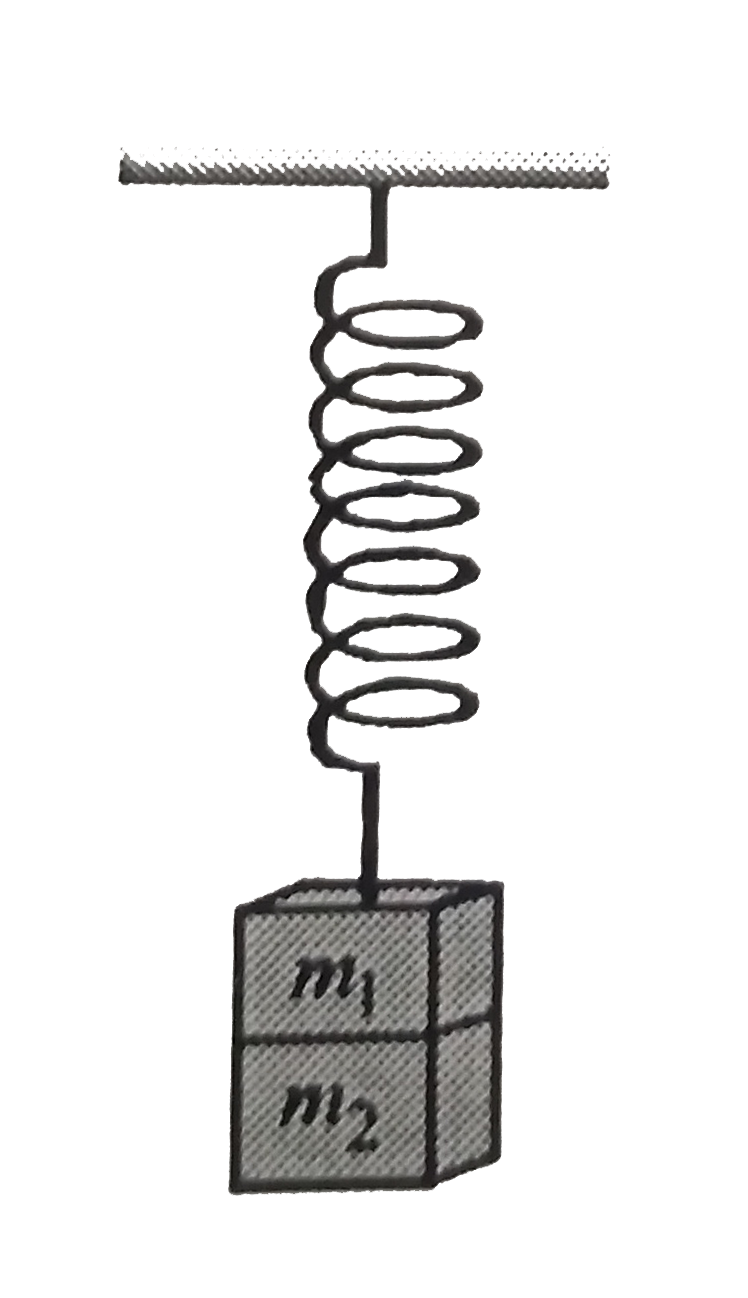Two masses m1 and m2 are suspended together by a massless spring of constant k. When the masses are in equilibrium, m1 is removed without disturbing the system. The amplitude of oscillations is

m1gK
m2gK
(m1+m2)gK
(m1−m2)gK
The correct Answer is:A
m2g=kl . . . (i)
l is the extension in the string when only m2 is connected.
Now, (m1+m2)g=k(l+Δl) . . . (ii)
Δl→ increase in extension when (m1+m2) is connected
from equation (i) and (ii)
m1g=kΔl⇒Δl=m1gk.
Similar Questions
Two masses m and M are suspended together by a massless spring of force constant 'K'. When the masses are in equilibrium, M is removed with out disturbing the system. The amplitude of oscillation is
View SolutionTwo masses m and M are suspended together by a massless spring of force constant K'. When the masses are in equilibrium, M is removed with out disturbing the system. The amplitude of oscillation is
View SolutionTwo masses m1 and m2 are suspended together by a massless spring of constant k. When the masses are in equilibrium, m1 is removed without disturbing the system. The amplitude of oscillations is

View SolutionTwo masses M and m are suspended together by massless spring of force constant -k. When the masses are in equilibrium, M is removed without disturbing the system. The amplitude of oscillations.
View SolutionTwo masses m1andm2 are suspended together by a massless spring of constant k. When the masses are in equilibrium, m1 is removed without disturbing the system. Then the angular frequency of oscillation of m2 is
View SolutionTwo masses 8 kg 4 kg are suspended together by a massless spring of spring constant 1000 Nm^(-1) . When the masses are in equilibrium 8 kg is removed without disturbing the system . The amplitude of oscillation is
View SolutionTwo masses m1andm2 are suspended together by a massless spring of constant k. When the masses are in equilibrium, m1 is removed without disturbing the system. Then the angular frequency of oscillation of m2 is
View SolutionTwo masses m_1 and m_2 are suspended together by a massless spring of constant k. When the masses are in equilibrium, m_1 is removed without disturbing the system. Then the angular frequency of oscillation of m_2 is
View Solution
